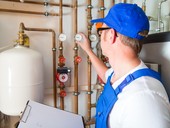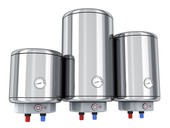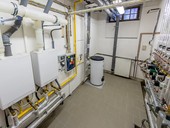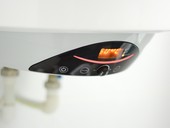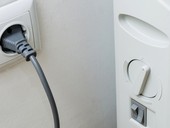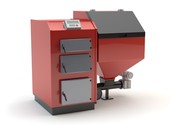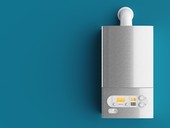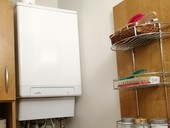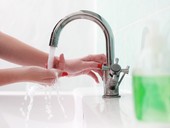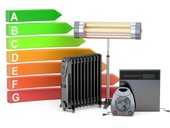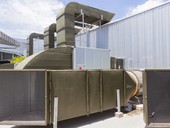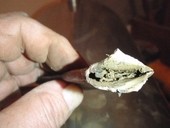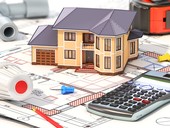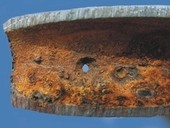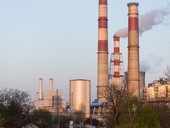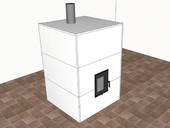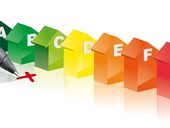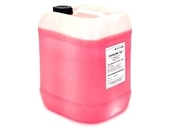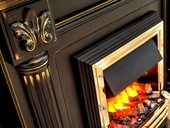When rebuilding the HVAC systems, it is necessary to respect the implementing regulations which define the framework of the certified technical procedures. In a number of examples of practice, it shows the absence of these facts. The article deals with the implementing standards and recommendations for the assembly and acceptance process of heating systems. It is designed not only for assembly companies, but also for investors and administrators who take over the work and then use it.
Archiv článků od 16.10.2017 do 26.2.2018
Revised CSN EN 12897 “Water Supply – Indirectly heated pressure (closed) storage water heaters” applies to indirectly heated pressure container heaters up to a volume of 2000 liters usable in internal water conduits at overpressure from 0.05 MPa to 1.0 MPa. The author draws attention to important provisions of the standard that will be reflected in practice.
In the area of existing thermal energy supply systems, the processes of disconnection of existing heat consumers have been ongoing for a long time. The key point is correctness of the Energy Certificates. The article provides an example of a specific assessment of disconnection from central source heat supplier.
The article deals with the economic assessment of energy saving measures as a further continuation of the topic of reconstruction of HVAC systems in apartment buildings. Selection of economical lifespan for selected elements and functional parts with preventive maintenance costs is provided. Finally, an example of the apartment building evaluation is given.
Family houses with the concept of electric heating by means of an electric boiler or electric direct heating system and the preparation of hot water in an electrically heated tank do not meet the requirement for the energy performance of buildings. The authors analyze the magnitude of the conversion factor and other parameters that would meet ENB requirements.
Eco-design is a set of parameters (especially energy efficiency) that must be observed by the supplier (the manufacturer or importer) of the energy-related product when it is placed on the EU market or into operation. The article provides an overview of requirements for new sources and boiler rooms in relation to implemented regulations.
The authors analyze the ecological parameters of gas condensing boilers, the presence of these boilers in operation and estimate future developments. On the basis of the analysis, they conclude how favorable the transition to condensing technology will be reflected in the production of undesirable emissions of nitrogen oxides.
The paper presents the results of the experimental measurement of cold and hot water flows in the reconstructed pipeline of a residential building. The measured flows are compared to the calculation values according to STN 73 6655, DIN 1988-300 and the values computed by the calculation program. The results can be applied to the optimization of the design of internal water mains as well as the optimization of the design of the hot water preparation plant and its heat source.
Local heaters are other products for which the Eco-design and Energy Labeling Rules start to apply from January 2018. Obligations are not introduced for all types of heaters at a time, but will be applied until 2022, when local solid fuel heaters will apply for the last category of a large family of these small heat sources.
By introducing the Eurovent regulation for air handling units, the higher requirements for ventilation designers were brought. However the effect of the high efficient AHU can be easily set back by ineligible air leakage through pipes before distribution into living areas. Pipe air leakage rate together with all components should answer to requirements on AHU established by valid standards.
It is generally known that the combination of inappropriate materials and the chemical composition of the heating water can cause serious failure of the heating system. However, from time to time, due to lack of supervision by the designer on the construction site (the investor does not order it, because he thinks he is expensive and unnecessary according to suppliers) and unprofessional construction supervision, there are cases that document the violation of perhaps all the principles that could be found. The occurrence of the accident, the financial damage, is then quite legal.
The trend of residential buildings is to improve energy efficiency, improve the quality of the indoor environment, improve building and technical condition of the building, minimize the cost of building operation and overall maintenance. When designing buildings, elementary analysis requires all factors that have a significant impact on energy efficiency. One is also the ratio of transparent structures to non-transparent structures. In this paper, we analyze the ratio of transparent structures to non-transparent structures to the need for heat for heating and the need for energy for cooling.
The requirements for heating water quality are increasing with the increasing technical level of equipment from which the heating systems are assembled. Parameters of common water are therefore modified in various ways, altered to match as much as possible the desired ideal state. If these processes do not take place due to the material composition of the heating elements, damages occur. Even in a relatively short time since commissioning. The most common ways of changing water parameters are adding inhibitors, softening water and desalting water.
Industrial chimneys are civil engineering works, which in addition to static and dynamic effects, direct and indirect loads, are also exposed to significant non-stationary environmental loads. Analysis of their durability focuses on the evaluation of vertical cracks, corrosion of concrete and reinforcement, which have a decisive influence on the resistance of the chimney's shaft with regard to the ultimate and serviceability limit states, as well as their durability.
This article aims to broaden knowledge about behaviour of different types of local wood-burning heaters in term of time course of heat delivery into the room. The article presents a comparison of performance of the selected heater – fireplace insert, which was gradually rebuilt and tested as stove with/without accumulation heat exchanger and closed fireplace with accumulation in different stoking regimes. In the end of the article, the measured results are compared with previously obtained hea t output course of individually built stoves.
Assessing energy performance of the building is also done from the point of view of the need for non-renewable primary energy. A common layman probably does not know what this means. At the same time, the need for non-renewable primary energy fundamentally influences the design of energy sources for heating, cooling, hot water preparation, etc. for a particular building. The need for non-renewable primary energy is one of the three main energy performance indicators of a building, and if it is assessed as too large, the building can not be validated.
Heating systems, solar systems, primary circuits of heat pumps, etc. can be installed in the environment or exposed to operating conditions where their function must be guaranteed even at temperatures below zero degrees Celsius. In this case, pure water cannot be used to transmit heat energy. Low-setting (non-freezing) liquids consisting of a mixture of water and other substances are used to reduce the resulting freezing point to negative temperatures.
Because of the emission of pollutants during the combustion of solid fuels in local household heaters (fireplaces and stoves) tightening requirements (emissions and efficiency) are gradually adopted in individual EU countries. The requirements are mainly aimed at manufacturers or importers of incinerators who have to prove their fulfillment when placed on the market. This is a different approach than hot-water boilers, where requirements are targeted not only on manufacturers and importers, but also on operators. This partly changes for the Czech Republic, where the Air Protection Act also introduces obligations for local furnace operators with a hot-water coil (part of the heat is supplied to the heating water from the source). The aim of this article is to provide an overview of valid and planned requirements and also to compare them.
zpět na aktuální články
